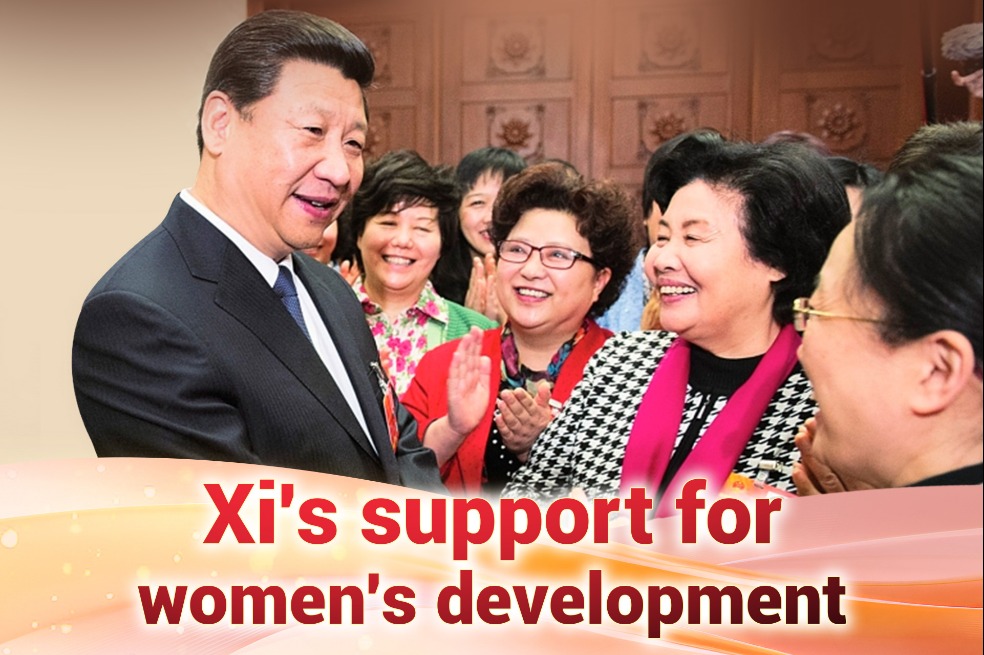Execs optimistic about China's growth


A1: If the rapid growth of China's economy in the past 40 years mainly resulted from the benefits of the transition from a planned economy to a market economy, then for the years to come, it is a new consensus that the medium and high-speed growth of China's economy will mainly rely on the efficiency improvements brought about by technological innovations. In the next 10 years, eight technologies, including autonomous driving, machine translation, biological computing, deep learning frameworks, digital city operations, knowledge management, AI chips, and personal intelligent assistants, will undergo a transformation from quantitative change to qualitative change.
Baidu has always insisted that the digital economy is evolving into an intelligent economy driven by artificial intelligence, which will bring profound changes to our economy and social life. Intelligent economy is the new label of China's economy for the next 10 years. Driven by AI platform enterprises, as represented by Baidu, China's intelligent economy will achieve rapid development and embrace the arrival of the intelligent era.
Taking smart transportation as an example, the "ACE Transportation Engine", a smart transportation solution launched by Baidu Apollo, has been put into use in nearly 20 cities, such as Beijing, Changsha, Baoding and Guangzhou. The solution can greatly improve the efficiency of transportation and also boost economic growth.
According to calculations, only the method of software updates and smart transportation infrastructure based on V2X technologies promise to improve traffic efficiency by 15 percent to 30 percent and boost the contribution to GDP by 2.4 percent to 4.8 percent in absolute value.
A2: This year is the first year of the 14th Five-Year Plan. Since the industrial revolution, innovation and efficiency have been an important driving force for the development of the world economy and the improvement of human life. Now, the world is welcoming a new "innovation dividend period", and the intelligent economy driven by artificial intelligence will become one of the new engines of economic development.
Currently, Baidu Brain is China's leading AI production platform integrating software and hardware. As a type of AI-based "new infrastructure" in the intelligent era, Baidu Brain is now seeing strong adoption, with over 2.65 million developers, and has produced more than 270 leading AI capabilities, with daily average use volume exceeding 1 trillion times.
Baidu PaddlePaddle is China's first open-source industrial level deep learning platform with advanced technology and comprehensive functions, and is an "operating system for the intelligent era" independently developed in China. The Kunlun 2 chip independently developed by Baidu will be mass-produced soon, and will be deployed in search, industrial internet, smart transportation, and other areas.
A3: Basic research is the source of technological innovation. Although China's basic research has made remarkable progress, there's still some gaps between that and the advanced international level. The research and development of AI technology needs long-term persistence, and its commercial value cannot be reflected in just a few years. It requires technical personnel to be ambitious, patient, able to bear loneliness, and have a firm belief that they must master this technology.
Baidu is the first enterprise in China to fully invest in AI strategy. We have maintained high investment in technology for a long time. In 2020, Baidu's core R&D expenses accounted for 21.4 percent of its revenue, and its R&D investment intensity is at the forefront of China's large-scale internet technology companies.
After years of investment and accumulation, Baidu has applied for more than 10,000 AI patents, holding the most AI-related patents and filing the most AI-related patent applications of any company or organization in China for three consecutive years.
A5: The fifth plenary session of the 19th CPC Central Committee listed "Carbon emissions will steadily decline after reaching a peak" as its long-term goal for 2035, and proposed to formulate an action plan for peaking carbon emissions before 2030. The 14th Five-Year Plan will be the key period to achieve this goal.
According to a report from the World Resources Institute, carbon dioxide emissions from transportation account for about 9 percent of China's total carbon emissions. According to data from Boston Consulting Group, the average annual growth rate of carbon emissions in China's transportation sector remained above 5 percent from 2013 to 2019.
Moreover, with the acceleration of industrialization and urbanization, and the continuous increase of car ownership per capita and travel demand in China, the total amount of carbon emissions in the transportation sector is expected to continue to rise. The rapid development of new technologies, such as artificial intelligence, has greatly enhanced the potential for emissions reduction in the transportation sector.
First, the early realization of large-scale commercialization of autonomous driving is conducive to reducing the carbon intensity of transportation. After years of research and development, the safety of autonomous driving has been preliminarily verified. Large-scale commercial use of autonomous driving will greatly change the mode of urban transportation, and make green and efficient unmanned public transportation replace private cars as the preferred choice for civilians to travel.
Secondly, to realize the informational and intelligent transformation of transportation infrastructure at an early date will improve the perception, calculation, decision-making and dispatching ability of the transportation system in all aspects, thus greatly alleviating traffic congestion, allowing civilians to travel more efficiently and helping to realize the low carbonization of road-network operations. It is estimated that smart transportation infrastructure based on V2X technologies will improve traffic efficiency by 15 percent to 30 percent.
























